Earlier this summer, I purchased a TP-Link Deco BE25-Outdoor Wi-Fi 7 extender to expand coverage in my backyard. I found performance to be excellent, as I witnessed a more than 2x improvement in 5 GHz throughput and a nearly 5x improvement in 2.4 GHz throughput.
Since that time, TP-Link sent us a Deco BE65-Outdoor to review, which is a tri-band Wi-Fi 7 extender, rather than the dual-band Deco BE25-Outdoor. That added band and performance also means that the Deco BE65-Outdoor is more expensive, with an MSRP of $299.99 versus $149.99 for the BE25-Outdoor I had been using.
Design of the TP-Link Deco BE65-Outdoor
The Deco BE65-Outdoor is similar in design to the BE25-Outdoor: It’s a tall, white cylinder with a black base that unscrews to reveal the ports inside for connectivity and power. A rubber gasket prevents moisture and dirt from entering the chassis. With that said, TP-Link says that the Deco BE65-Outdoor is IP65 certified for dust and water resistance.
Inside the unit, you'll find two 2.5 GbE LAN ports that support Power over Ethernet (PoE), and a power port for the included 9-foot cable.
The Deco BE65-Outdoor measures 4.23 × 4.23 × 6.93 inches and weighs 3.48 pounds.
TP-Link Deco BE65-Outdoor Specifications
Swipe to scroll horizontally
MSRP (2-pack) | Wi-Fi Standard | # of Bands | 2.4 GHz Speeds | 5 GHz Speeds | 6 GHz Speeds | Coverage | Ports (Router) | |
$299.99 | Wi-Fi 7 | 3 | 688 | 4324 | 5765 | 3,000 sq ft | 2 x 2.5G, LAN | |
$149.99 | Wi-Fi 7 | 2 | 688 Mbps | 4324 Mbps | —- | 2,800 sq ft | 2 x 2.5G, LAN |
Setting up the TP-Link Deco BE65-Outdoor
The first step for setting up the Deco BE65-Outdoor was to find a suitable place to mount it outside. This time around, I opted to mount the unit in my backyard on a tree. The tree is roughly 25 feet away from the main router in my Deco BE63 Wi-Fi 7 mesh network. Only one exterior wall separates the primary router from where the Deco BE65-Outdoor was installed.
TP-Link includes a mounting template, four screws, and a plastic mounting bracket, which I installed on the tree at a height of about 6.5 feet. The Deco BE65-Outdoor then just slips securely onto the mounting bracket. Given that this was just a temporary setup for review purposes, I grabbed a 50-foot extension cord from the garage and plugged one end into an exterior wall outlet and the other end into the Deco BE65-Outdoor’s power cord.
TP-Link makes it incredibly simple to add a satellite to your existing network via the Deco app. In case you didn’t know, all of TP-Link’s Deco mesh routers are only configurable through the Deco app, and that remains the same with additional satellites like the Deco BE65-Outdoor and the Deco BE25-Outdoor.
Once I mounted and plugged in the Deco BE65-Outdoor, I went back inside the house and opened the Deco app. When the app opened, I immediately received a prompt saying that the Deco BE65-Outdoor had been found. I was then asked if I wanted to add the device to my existing Deco BE63 mesh network, to which I obliged.
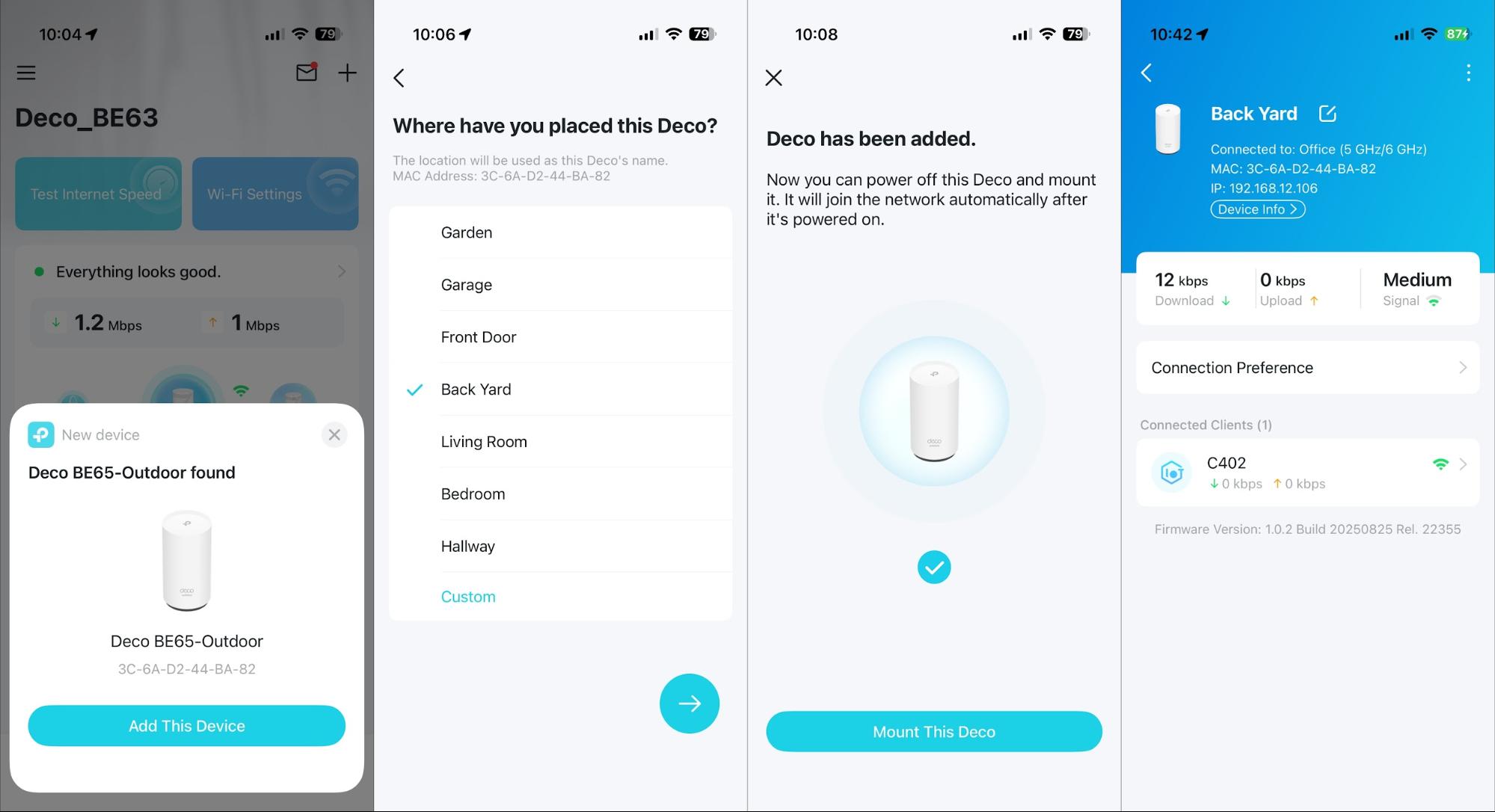
Once the initial network optimization was completed, the Deco BE65-Outdoor opted to connect directly to the primary Deco BE63 router/node upstairs. Initially, the Deco BE65-Outdoor opted for a 5 GHz wireless backhaul to the mothership, rather than the 5 GHz/6 GHz MLO backhaul that the Deco BE63 satellite in my living room uses.
I found this odd, because the Deco BE65-Outdoor and my living room Deco BE63 satellite are both roughly 25 feet away from the main Deco BE63 router – and the living room node has additional walls and floors in its path. Even when I placed the Deco BE65-Outdoor within six feet of the main Deco BE63 node, it would still only connect using the 5 GHz band.
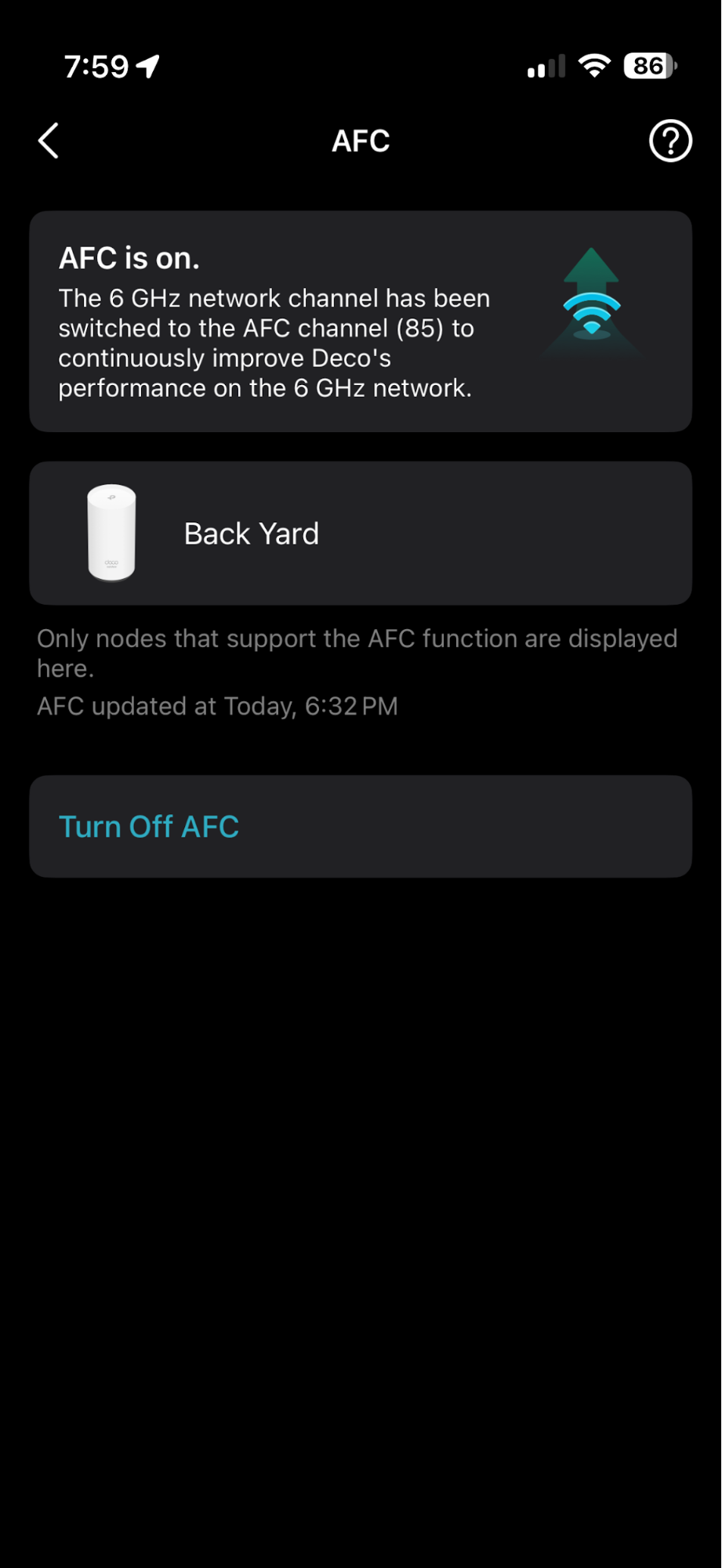
After some trial and error (and an assist from TP-Link), I discovered that the Automated Frequency Coordination (AFC) mode, which is required for outdoor 6 GHz band usage, was not enabled. This was despite my clicking the option during the initial setup to enable AFC. I found the setting buried in that Advanced section of the 6 GHz band in the wireless settings. Attempting to turn it on continued to give me an error message, so I tried rebooting the router several times. On the third reboot, the AFC mode “stuck,” and I was then able to connect reliably on the 6 GHz band.
Finally, I performed a firmware update to get the unit up to par with the rest of my mesh network.
TP-Link Deco BE65-Outdoor Performance
I set up two locations for testing performance: my back porch and my fire pit, which is about 20 feet from my back porch. I decided to do baseline testing to measure performance when connected to my existing Deco BE63 network only. I then performed tests with my laptop, wirelessly connecting to only the Deco BE65-Outdoor node on the mesh network using the wireless backhaul.
I also decided to throw in a third scenario, connecting the Deco BE65-Outdoor to the Deco BE63 living room node using a wired backhaul. In this scenario, I connected a 75-foot CAT6e cable to a free 2.5 GbE port on the Deco BE63 and ran the cable all the way out my back door, across the back porch, and across the yard to the tree-mounted Deco BE65-Outdoor and plugged it into a free 2.5 GbE port. This is the best-case scenario for wireless performance. When an Ethernet backhaul is used, the Deco BE65-Outdoor automatically makes the necessary changes to integrate with the network. I then performed tests with the laptop connecting wirelessly to the Deco BE65-Outdoor node.
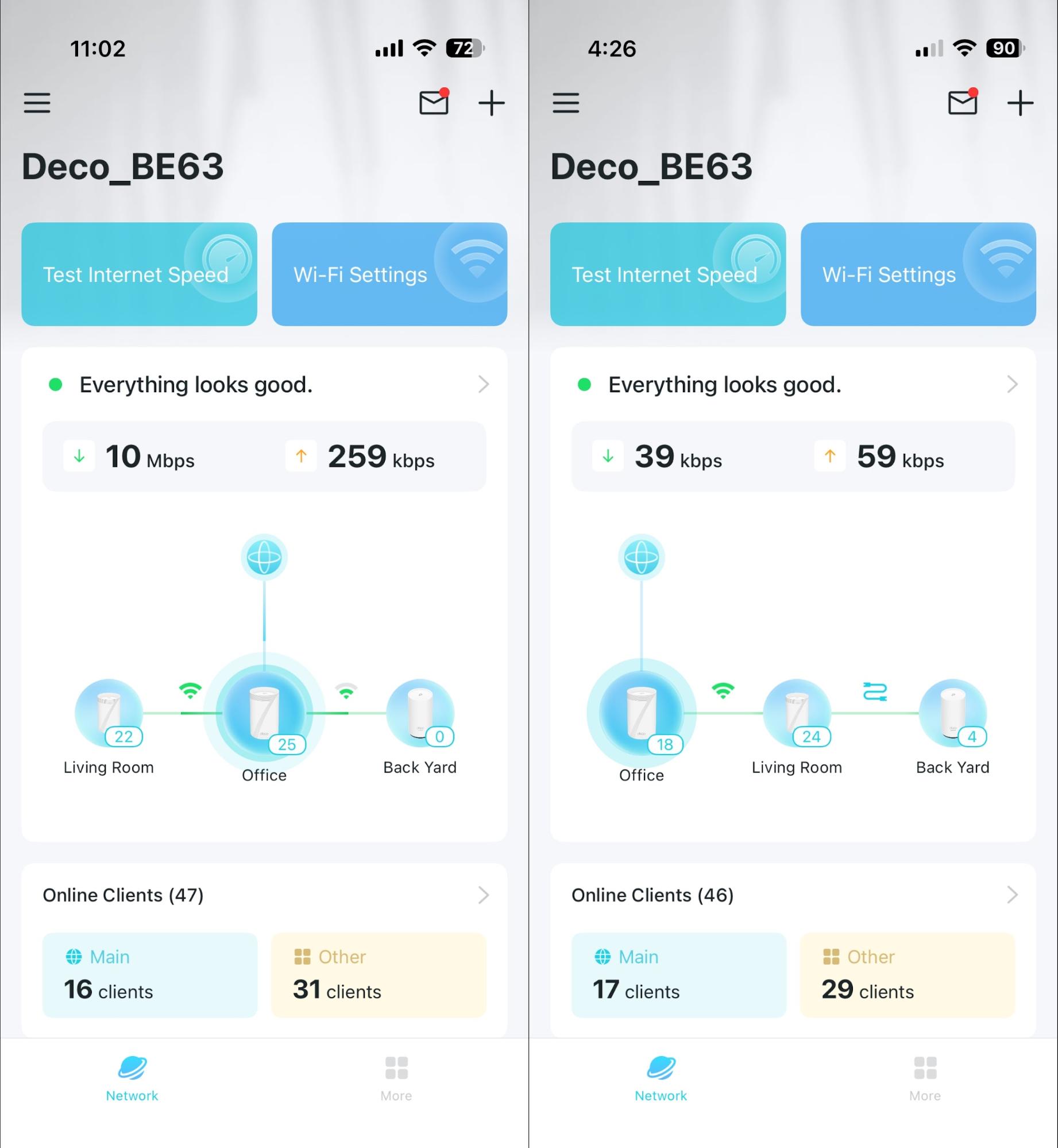
For my test system, I used an HP OmniBook X (Qualcomm Snapdragon X Elite) laptop with a Qualcomm FastConnect 6900 Wi-Fi 6E wireless card. I then used my trusty iPerf3 server, which, in this instance, was connected via a 2.5 Gbps Ethernet connection to my Deco BE63 router.
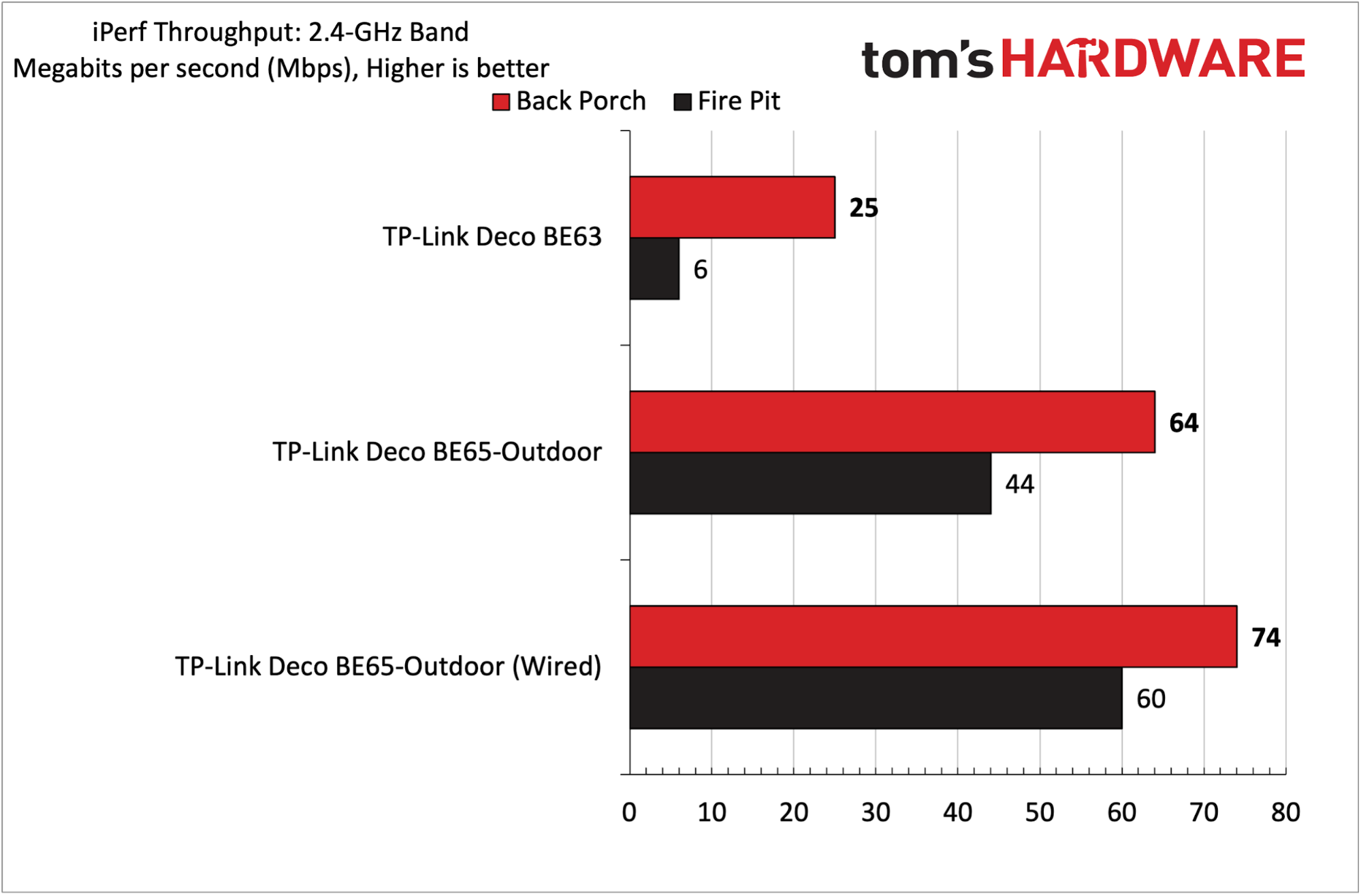
With that said, the numbers speak for themselves regarding performance. The baseline numbers when connecting to the Deco BE63 network yielded 504 Mbps on the porch and a dismal 115 Mbps by the fire pit, using the 5 GHz band. Switching to the 2.4 GHz band, I saw 25 Mbps on the porch and just 6 Mbps at the fire pit.
Shifting to the Deco BE65-Outdoor (wireless backhaul), I saw maximum throughput of 479 Mbps while on the porch, and 343 Mbps at the fire pit (a 3x improvement) on the 5 GHz band. When using the wired backhaul, iPerf3 performance on the porch climbed to 760 Mbps and averaged 601 Mbps near the fire pit.
However, the highest performance was seen using the 6 GHz band, where the OmniBook X nearly hit 900 Mbps on my porch and 570 Mbps at the fire pit when using a wired backhaul.
There were even dramatic improvements on the 2.4 GHz band, reaching 64 Mbps on the porch and 44 Mbps at the fire pit with the wireless backhaul. With the wired backhaul enabled, those numbers climbed to 74 Mbps and 60 Mbps, respectively.
Bottom Line
The TP-Link Deco BE65-Outdoor is a premium wireless satellite that can be used with the company’s Deco mesh systems. Performance across the board on my back porch and in my back yard was dramatically faster when using the Deco BE65-Outdoor versus my “base” Deco BE63 mesh network. I saw upwards of a 10x improvement on the 2.4 GHz band and significant gains on the 5 GHz band. The option to use a wired backhaul further strengthens data throughput.
However, we must then address pricing. The Deco BE65-Outdoor costs $300, which is twice the price of the dual-band Deco BE25-Outdoor. If all you’re hoping to do is expand wireless coverage to your outdoor areas, the Deco BE25-Outdoor should be wholly sufficient for your needs. But if you want a “spare no expense” wireless node that is second to none in performance, the Deco BE65-Outdoor is hard to ignore.

 1 month ago
43
1 month ago
43
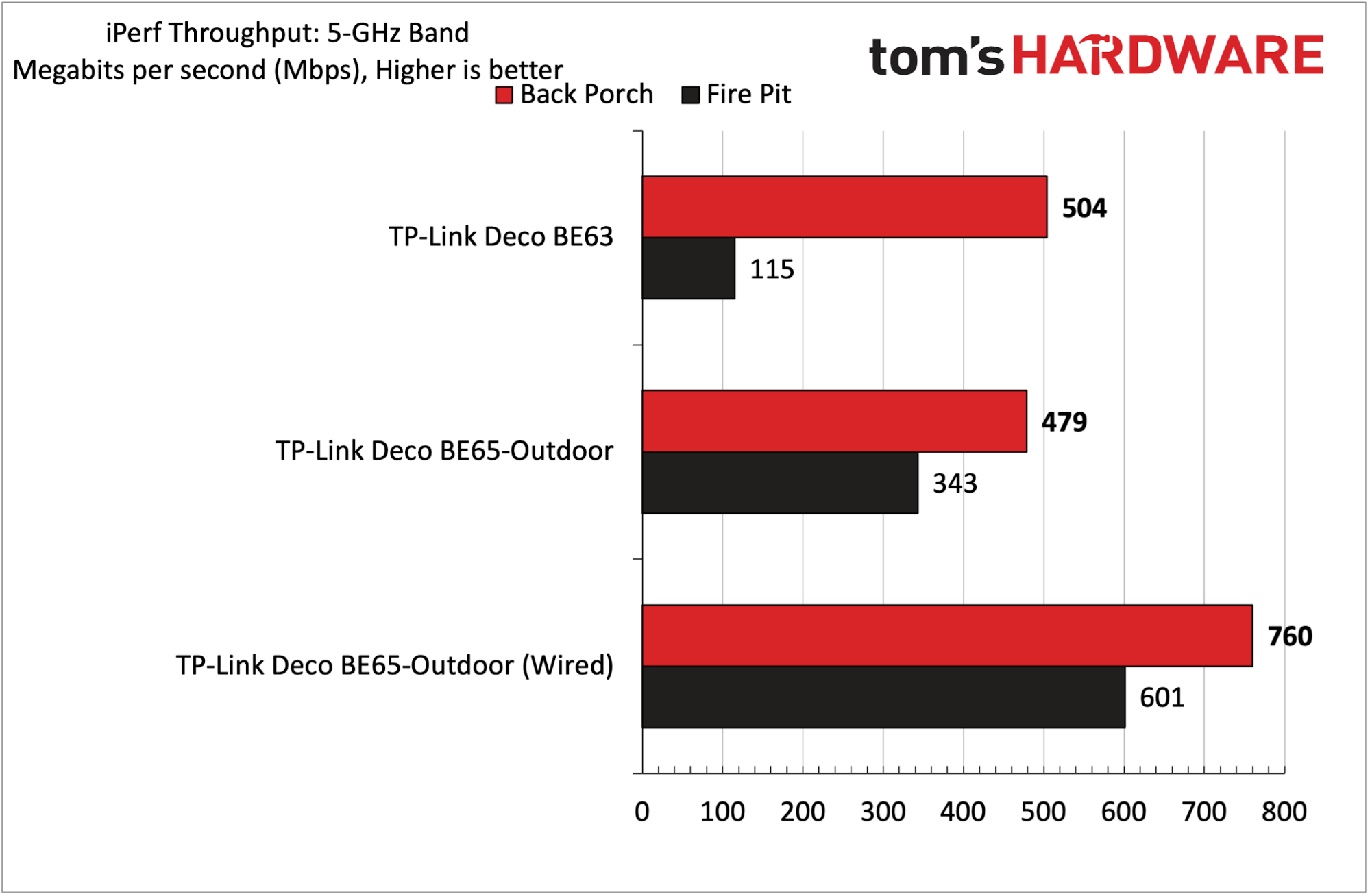
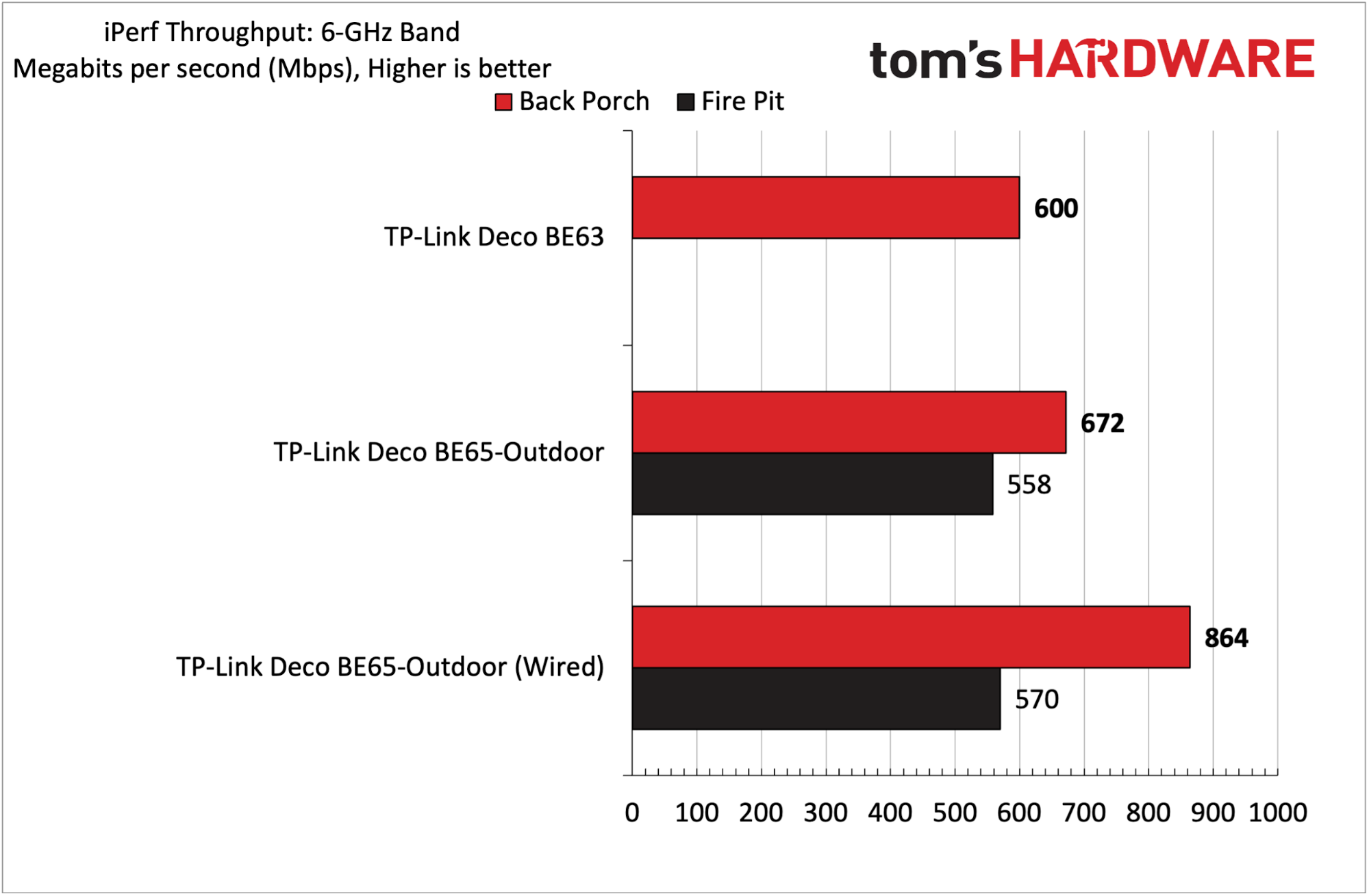


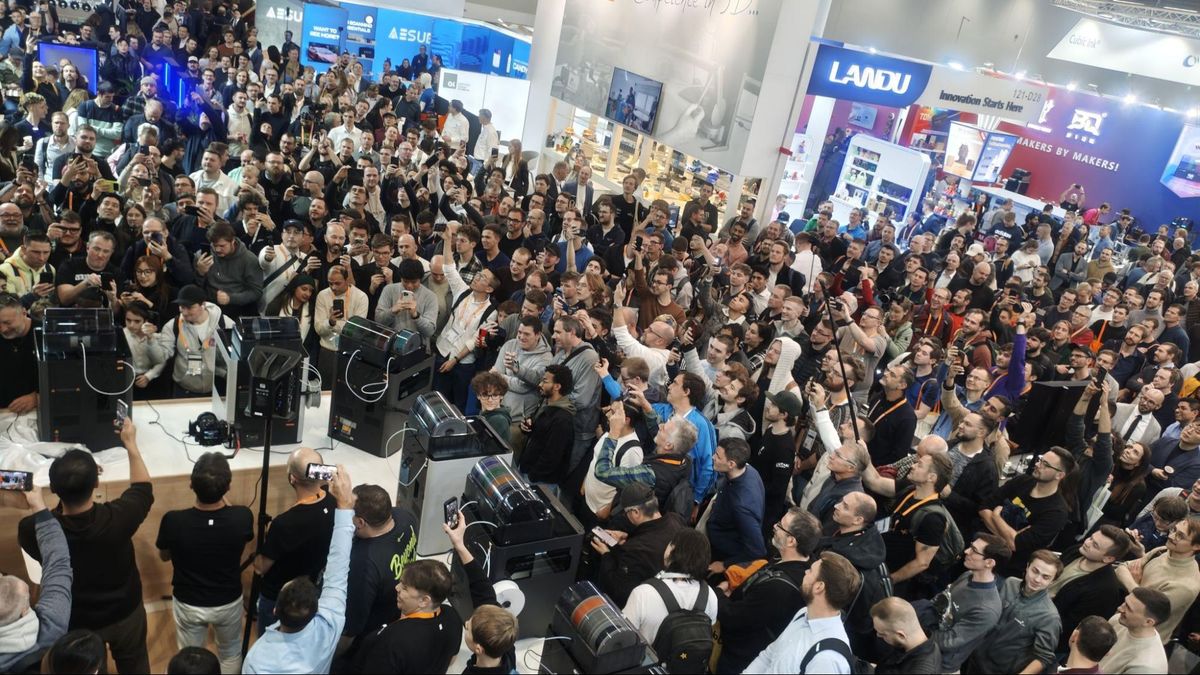





 English (US) ·
English (US) ·